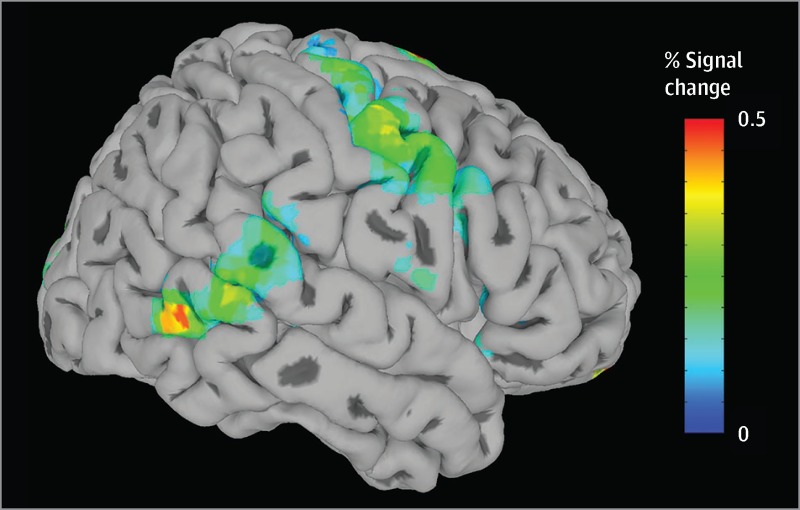Functional magnetic resonance imaging (MRI) scan of coauthor Renée Fleming imagining herself singing an excerpt of “River Songs” (a medley by Dave Grusin). The colors indicate an increase in fMRI signal, commonly interpreted as increased brain activity. Areas where a statistically significant increase in activity was not observed are shown in gray. Darker gray regions indicate indentations in the cortex. Like speaking and overt singing, imagined singing activates motor regions and auditory-motor integration regions, but this silent rehearsal did not excite primary auditory regions. Imagined singing also activates regions in the inferior frontal cortex, believed to play a role in musical syntax and motor preparation, and the amygdala, commonly implicated in studies of emotion and arousal. These results from one individual are similar to those seen in larger studies of singers. Image courtesy of David Jangraw, National Institute of Mental Health, NIH.

An official website of the United States government
Here's how you know
Official websites use .gov
A
.gov website belongs to an official
government organization in the United States.
Secure .gov websites use HTTPS
A lock (
) or https:// means you've safely
connected to the .gov website. Share sensitive
information only on official, secure websites.
